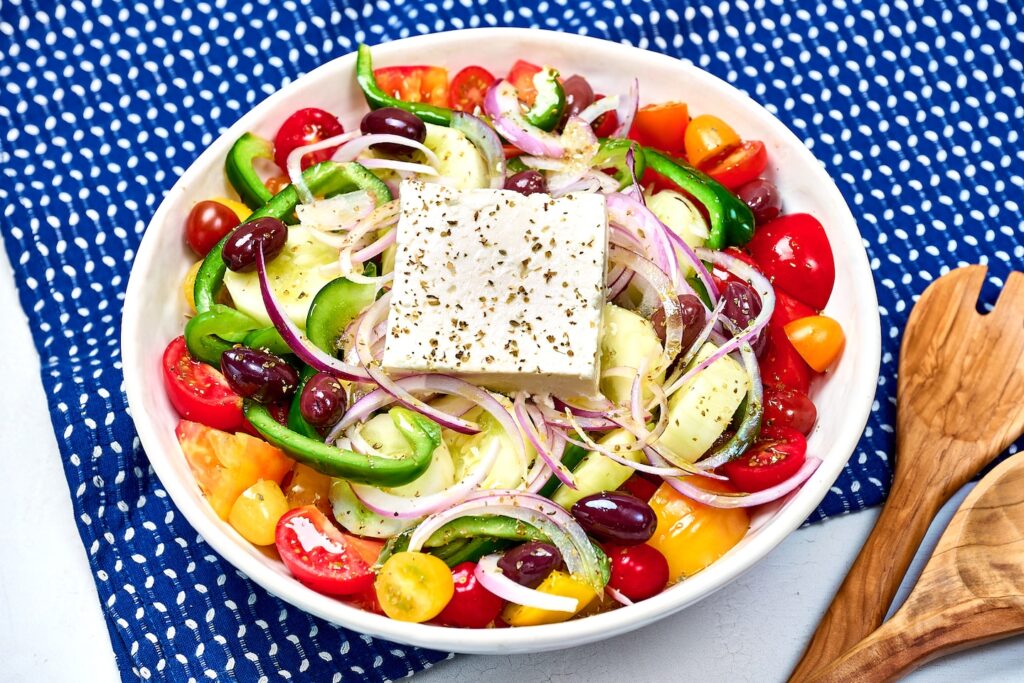Kochilas, prolific cookbook author and host of the public-television series “My Greek Table,” was born and raised in Jackson Heights, Queens. But her familial roots are on Ikaria, famous for being one of the world’s “Blue Zones,” where residents enjoy particularly long and healthy lives and where she spends time (and teaches classes) every summer. As I have written before, some of the biggest commonalities among the “Blue Zones” have to do with food; among other things, the regions share a focus on a primarily plant-based diet.
That’s the focus of Kochilas’s latest book, “The Ikaria Way,” which demonstrates the richness and variety of its plant-based cooking, traditional and modern. “We always associate Greek cuisine with lamb souvlaki, meatballs, things like that,” she tells me. “And in Greek restaurants, that’s basically what’s represented most. But this really is one of the great plant-based traditional cuisines of the world. … It’s just that people don’t really think about it in that context.”
As much as I could talk to Kochilas all day about all manner of vegan and vegetarian dishes, this call has a sharper focus. I want to get her thoughts on what I consider one of Greece’s greatest gifts to the world: a classic that we know merely as Greek salad but is called horiatiki salata in its native land. The name translates to “village salad,” Kochilas explains, but its origins aren’t in the villages at all.
At least according to one story, in the 1960s, in the Plaka neighborhood of Athens, she tells me, restaurateurs started adding a block of feta to the top of a simple tomato-cucumber salad. Why? Because there were government price controls on menu items, and the cheese took the salad into a higher-priced category.
Since then, as it made its way onto restaurant menus seemingly everywhere, it has sometimes lost its way, as lettuce — and more — came into the picture. Kochilas talks about how in a Greek enclave in Florida, a scoop of potato salad became de rigueur.
While there are some regional variations on the salad in Greece — mostly regarding the exact type of cheese — Kochilas advocates a purist’s approach for home cooks. After trying her recipe rather than just winging it like I usually do with this dish, I am a convert. When the vegetables, particularly the tomato and cucumber, are in high season and at their peak flavor, and when you use the best-quality olive oil and feta and olives you can find, you’ll understand. Also crucial: Layering in thinly sliced red onion and green pepper, and sprinkling with oregano and maybe some optional pepperoncini. The result is a harmonious balance of bracingly acidic flavors, rich creaminess, glorious vegetal earthiness and outstanding crunch.
Kochilas does occasional restaurant consulting work, and she tells me that she often finds herself pleading with chefs: Don’t serve Greek salad in January. “Only make it in July, August, September,” or whenever tomatoes near you are at their best, beautifully fragrant and ripe.
- Find cucumber that’s as fresh as those tomatoes. Cut it into larger chunks than you might think, for the best crunch.
- Don’t add lettuce. “Lettuce and tomatoes aren’t in season at the same time. Either make a nice Greek lettuce salad with dill and scallions and lemon dressing, or make Greek salad.”
- Use Greek feta. “Not Wisconsin feta. This makes a world of difference. You know, you’re not even supposed to call it feta if you’re producing it outside of Greece, so that’s a dealbreaker for me.”
- Include olives “that have some texture to them,” preferably kalamata.
- Put away the vinegar. “The acid comes from the olives and the feta,” not to mention the tomatoes. “No vinegar: This is very important.”
- Use Greek olive oil and Greek oregano, dried or fresh. And be generous with the oil, which balances the acidic flavors.
Kochilas tells me that even as we speak, her garden is bursting with tomatoes and cucumber, and she’s able to have Greek salad for breakfast, lunch and dinner. And then she shares her favorite part of eating it: dipping crusty bread into the bottom of the bowl to soak up those juices.
At that mouthwatering mention, she and I utter the same words at the same time: “It really is the perfect salad.”
